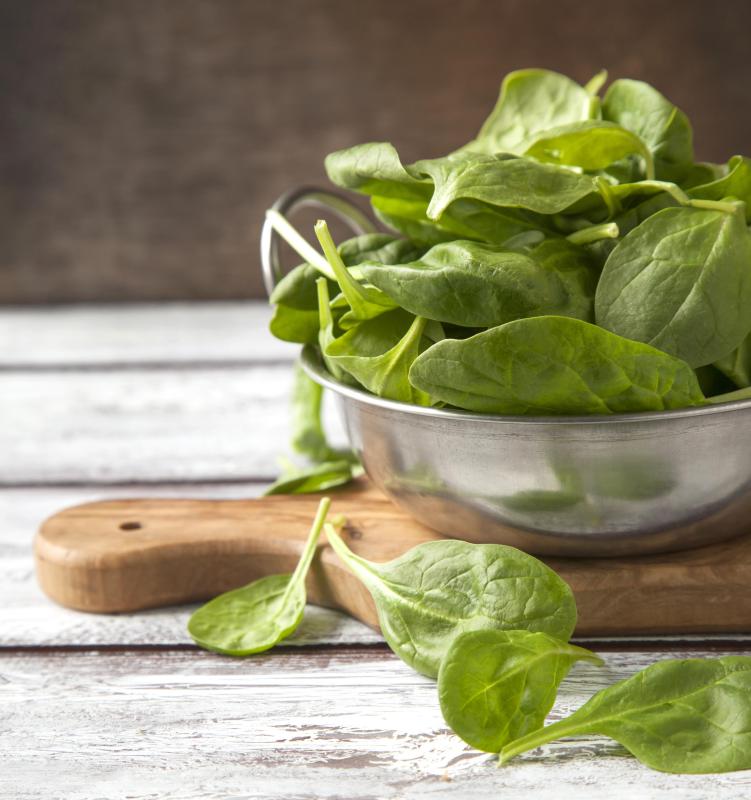At TheHealthBoard, we're committed to delivering accurate, trustworthy information. Our expert-authored content is rigorously fact-checked and sourced from credible authorities. Discover how we uphold the highest standards in providing you with reliable knowledge.
What Are Oxalates?
An oxalate is any chemical compound that contains an oxalate ion, which is the anionic or negatively-charged form of oxalic acid. All of the compounds in this family are therefore salts or esters of oxalic acid. Oxalic acid is the simplest dicarboxylic acid and has the formula HO2CCO2H; there are many different variations, though, and many potential combinations. They occur plentifully in nature, but can also be synthesized in labs for large-scale use. The compounds have a number of industrial uses, from cleaning agents to food preservatives. Depending on their core chemical makeup, though, different varieties can have startlingly different properties. Some are water-soluble while others aren’t, for instance, and others can be very strong reducing agents, even going so far as to leak nutrients like iron out of the blood. Others cause build-ups, particularly of minerals like calcium. People with certain health concerns are often advised to monitor their daily oxalate intake to help reduce symptoms or flare-ups.
Sources and Availability

Oxalic acid and the other oxalate compounds occur widely in nature, usually as calcium, sodium, or potassium salts. They are common in fruits and vegetables, in which they often contribute an astringent or bitter taste. Foods high in oxalates include spinach, rhubarb, strawberries, and parsley, though almost all plant foods contain some amount. Normally they are not especially harmful, although the leaves and roots of the rhubarb plant are especially rich in oxalates, and eating them can be toxic.

The compounds can also be artificially synthesized in labs. This route is often preferable for large-scale production of household cleaners or chemical agents, as it is often the most reliable way to ensure consistency of both strength and composition.
Oxalic Acid
Oxalic acid itself is unusually strong for an organic acid and is a good reducing agent. Commercially, it finds wide use as a bleaching agent, rust remover, and wood restorer. As an acid, it is toxic, extremely irritating, and must be used with caution to avoid ingestion or skin contact.
Questions of Solubility

Solubility concerns how readily compounds dissolve or dissociate in water. Sodium and potassium oxalates tend to be quite water-soluble, while calcium and magnesium salts are notably less so. The solubility of calcium oxalate is usually documented at only 0.005 grams/Liter (g/L) at physiological pH. This can impact everything from absorption to stability of the larger substance of which it is a part.
In fact, it is the insolubility of calcium oxalate that gives these compounds their medical significance. Formed when soluble oxalate encounters naturally-occurring calcium ions in the body, calcium oxalate precipitates as a solid and can cause considerable harm, especially in the kidneys. Calcium oxalate is the most common component of kidney stones, and the oxalate content of urine is the most significant factor in causing kidney stone formation. Patients prone to kidney stones may be put on low-oxalate diets.
As a Chelating Agent
Oxalate is also a good chelating agent, which basically means that it is a substance that can bind to various metal ions through electrostatic attraction. As such, it’s able to block the ions from being used by the body, either for good or ill. Chelated iron oxalate appears to be a major factor in gout, for example. Due to its low solubility, it precipitates from the blood in joints where the crystals can cause excruciating pain.
Average Intake and Health Concerns
The average person’s daily oxalate intake is usually between 80 and 120 milligrams per day (mg/day), though it can range anywhere from 40 to 350 mg/day depending on what’s eaten and how it’s been prepared. Consumption levels may be even higher in individuals who eat a typical Western diet high in preservatives and chemical additives.
Oxalates may also be produced through the metabolism of vitamin C, and large doses of this vitamin — in excess of 2 grams a day — are discouraged for this reason. Most soluble oxalate is eliminated in the urine, while the insoluble salts are eliminated in stools. An excess of oxalate in the urine is known as hyperoxaluria, and an excess in the body is called hyperoxalosis. Both conditions can be harmful, particularly if they persist for long periods of time.
Possible Autism Link
Some scholars have connected disturbances in oxalate metabolism to autism diagnoses in young children, and several theories have been put forth to account for this. There are reports that a controlled-oxalate diet can be beneficial in helping autistic children control their conditions, but so far this information is only anecdotal.
AS FEATURED ON:
AS FEATURED ON:













Discuss this Article
Post your comments